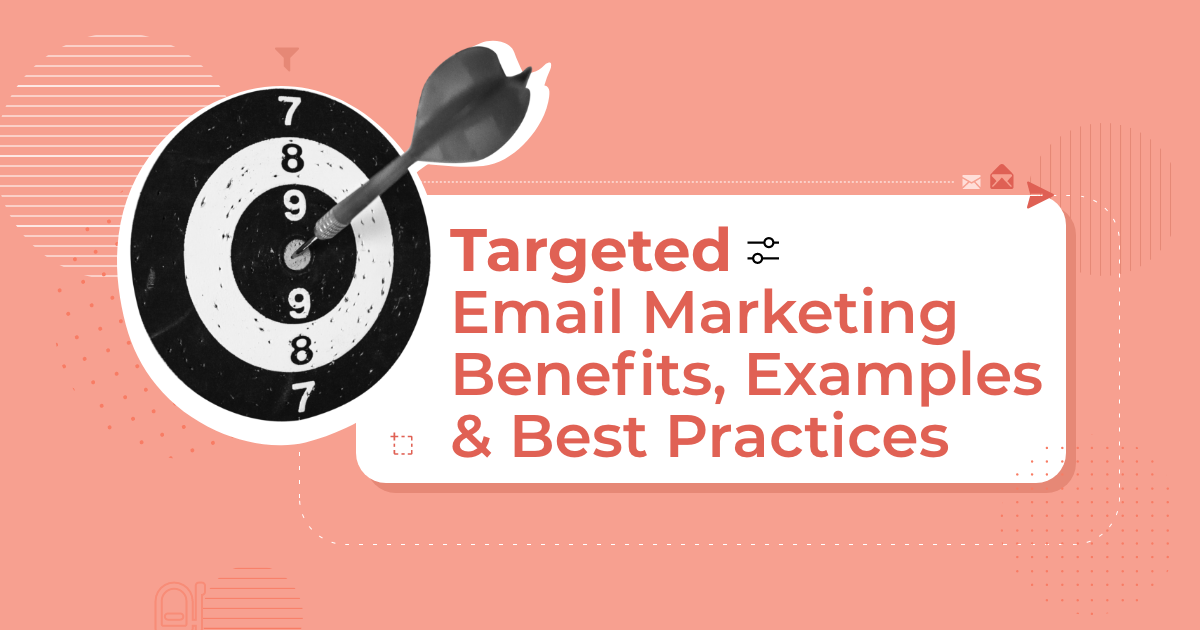
17 Best Tools to Drive Your Mobile App Growth In 2025
While 2024 may not be financially easier compared to last year, it’s time to leverage the martech decisions you’ve put on hold. But where should you focus on? To put it simply, prioritize retention over acquisition, renewals over new subscriptions, and repeat purchases over first-time conversions.
To support your key priorities, you need access to top-of-the-breed tools. Here are our (and the market’s) favorites to streamline your mobile app growth strategy.
User Acquisition & Retention
1. Adjust
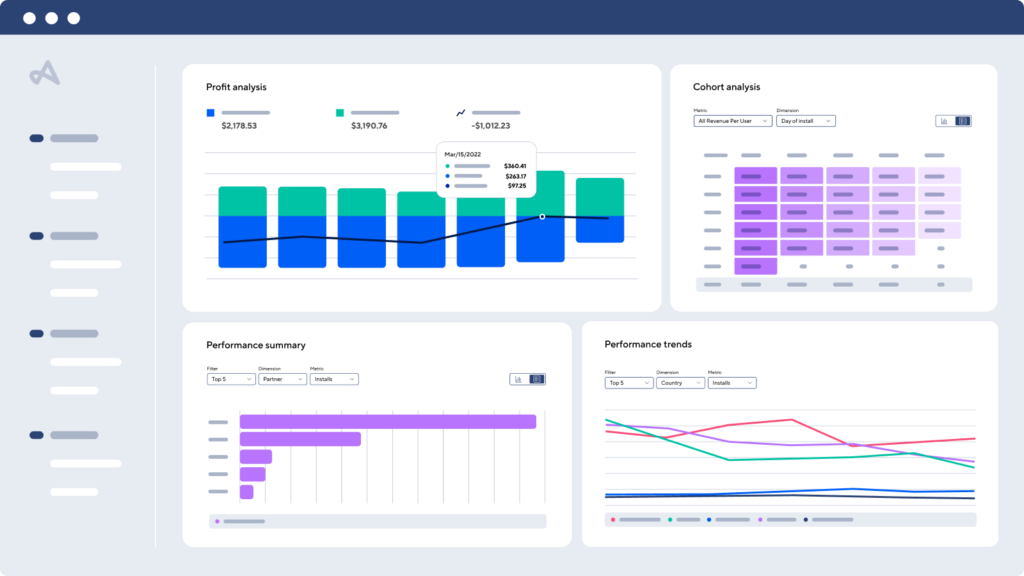
Adjust is a mobile marketing analytics platform that offers powerful tools to track and optimize your mobile app performance. Businesses trust Adjust’s insights to make data-driven decisions, improve user engagement, and maximize the impact of their advertising campaigns.
Adjust allows app marketers to delve deep into user behavior and fuel user-centric marketing campaigns. For instance, a mobile game publisher can use the platform to track user interactions within the game, such as level completions, in-app purchases, and session durations.
Its Fraud Prevention Suite offers real-time protection against mobile ad fraud. For instance, it detects and rejects fraudulent installs, such as those caused by SDK spoofing or click injection, before advertisers pay for them. This proactive fraud prevention ensures that marketing budgets are spent efficiently and that attribution data remains accurate.
For those concerned about data localization, Adjust offers explicit data residency. It also enables businesses to create personalized onboarding experiences and engage users effectively. For example, a fitness app can use Adjust to segment users based on their fitness goals and preferences.
2. AppsFlyer
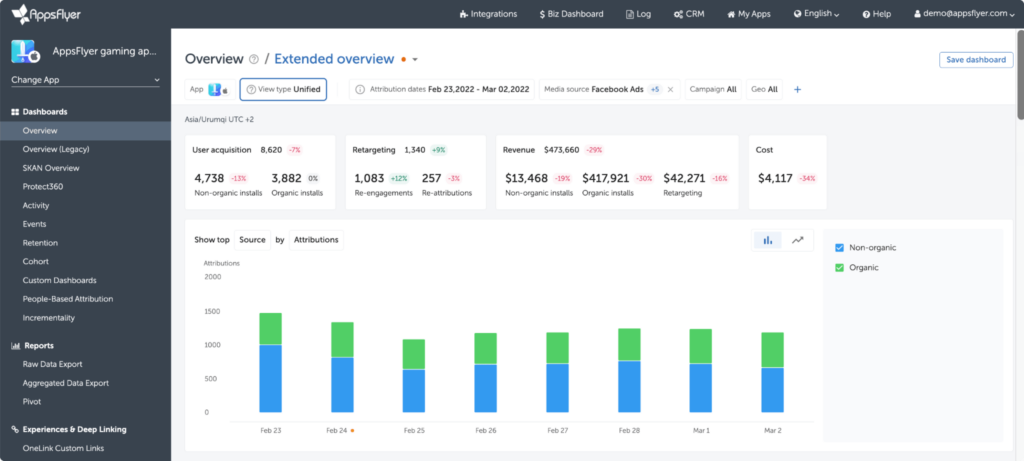
AppsFlyer is the mobile measurement partner (MMP) of choice for data-driven app marketers prioritizing user privacy. With multi-layered ad fraud protection and ROI measurement features, AppsFlyer is a future-proof choice for app businesses seeking to survive and thrive in 2024.
It provides comprehensive data on acquisition campaign performance and user behavior, enabling precise targeting and reliable campaign optimization across multiple channels. For example, a mobile app marketer running a campaign on various platforms, such as Facebook, Google Ads, and email marketing, can use AppsFlyer to attribute installs and in-app actions to the specific channel and campaign that drove them.
Relying on AppsFlyer’s real-time analytics, marketers can respond promptly to trends and shifts in user behavior. Equipped with the platform’s predictive features, it is possible to do even more, such as forecast long-term results and make proactive adjustments to campaigns. For instance, the model may predict which user segments are most likely to make in-app purchases or become long-term players.
AppsFlyer’s advanced fraud prevention tools are crucial for protecting marketing budgets from ad fraud. In a real-time scenario, if a mobile ad campaign is targeted by click fraud or install hijacking, AppsFlyer quickly identifies and blocks these fraudulent activities. This saves marketing dollars and ensures that genuine users receive the intended advertising messages.
User Engagement & Messaging
3. Pushwoosh
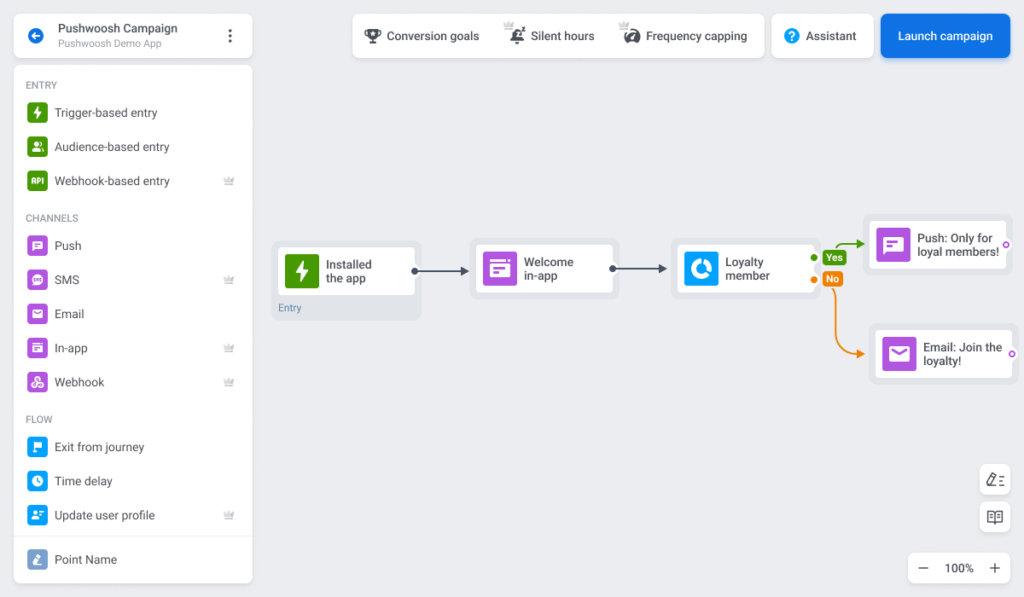
Pushwoosh is a customer engagement platform of choice for apps and mobile-first businesses. Born as a push notification provider, now Pushwoosh helps maximize user interactions across the channels and offers customizable solutions for media, lifestyle, e-commerce, fintech & banking apps, and many more.
Pushwoosh provides access to the most in-demand messaging channels: push notifications, in-app messages, emails, SMS, and WhatsApp. Most importantly, it allows uniting them in one omnichannel flow and collecting all the trigger event data on one customer data platform within Pushwoosh.
You can respond to your app users’ behavior in real-time and personalize your communications accordingly on the go. For example, you can start sending messages to a broad segment of customers who have made at least one purchase in your app and then narrow down the target according to your campaign goals. Both targeting and messaging will be set in one interface and edited in real-time on the visual canvas of Pushwoosh Customer Journey Builder.
Much like your messages are more effective when sent to specific segments, your post-messaging analytics is more insightful when conducted segment by segment. Pushwoosh provides that, too.
4. Moosend
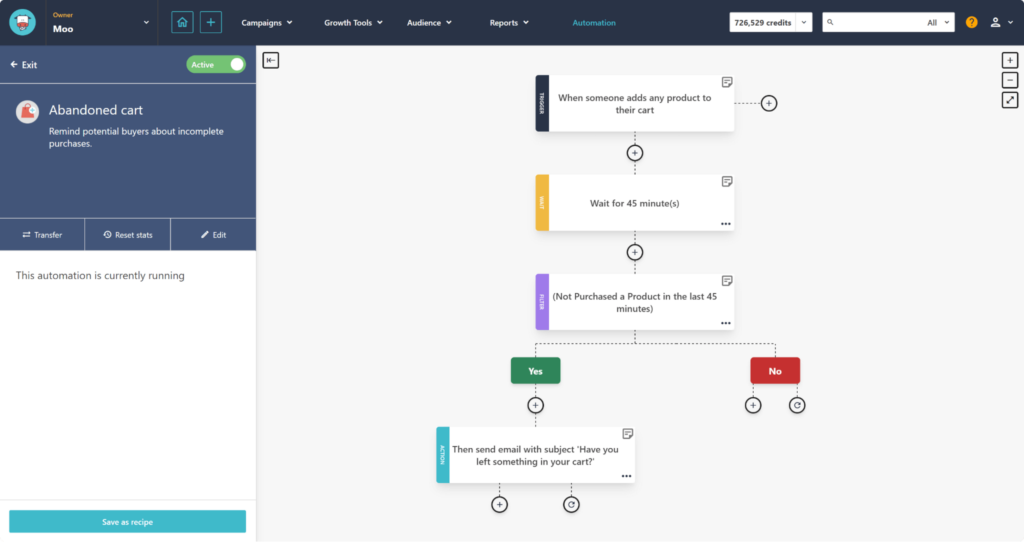
Moosend is a fully-featured email marketing platform. Its intelligent automation capabilities can satisfy most app businesses’ needs in personalized email campaigns. Moosend capabilities cover classic cases for e-commerce, such as cart abandonment and post-purchase communications, as well as engagement flows in subscription-based apps, from onboarding and activation to re-engagement emails.
Moosend’s robust analytics capabilities enable mobile app businesses to track key performance metrics related to their email campaigns: email open rates, click-through rates, social shares, and user unsubscribes. These metrics will enable you to drive your mobile app growth faster.
Its segmentation functionality allows targeting users based on their app-related interactions. For instance, you can create segments of users who have opened specific campaign messages, clicked on promotional links, or installed app updates. In response, you can send tailored emails to the corresponding segments, enhancing UX and nurturing user engagement.
Finally, Moosend gives access to all the resources needed to grow your email list and design beautiful campaigns, such as landing pages, signup form builders, and of course premade email templates. Sign up for a 30-day free trial and check them out.
If you’re interested in learning more about email marketing for mobile apps, find an extensive guide here.
Customer Data Platforms
5. Segment
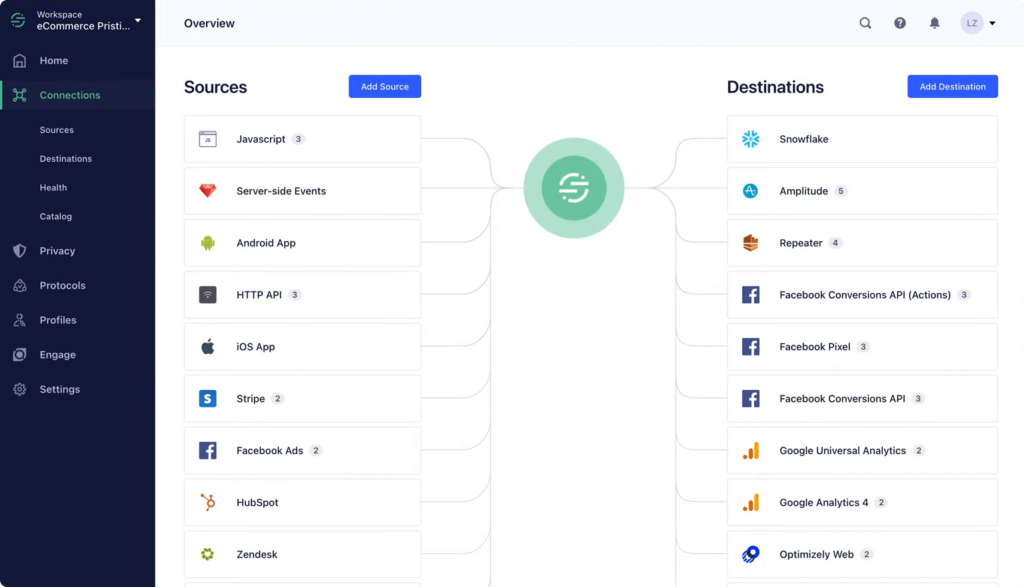
Segment is a platform that simplifies customer data management and analytics. If you collect your customer data in Segment, you can integrate it with a customer engagement platform of your choice and send seamlessly personalized communications.
Aggregating data from various touchpoints can be a struggle. Segment simplifies this process by collecting and centralizing customer data from websites, mobile apps, email campaigns, and other sources. With this unified customer data, businesses can create comprehensive customer profiles to deliver highly personalized experiences to their customers.
To understand which campaigns and channels drive conversions and revenue, Segment offers attribution modeling and analytics capabilities. The features allow tracking your customer journey across touchpoints, from initial awareness to conversion. Armed with this data, marketing teams can allocate their budgets more effectively, optimize campaigns, and identify high-performing channels.
Segment provides a continuous stream of customer data to analytics platforms, such as Google Analytics, Amplitude, or Mixpanel. This real-time data streaming ensures businesses have up-to-the-minute insights into customer behavior and performance metrics. Additionally, Segment allows companies to route customer data to warehouses like Amazon Redshift, BigQuery, or Snowflake.
6. mParticle
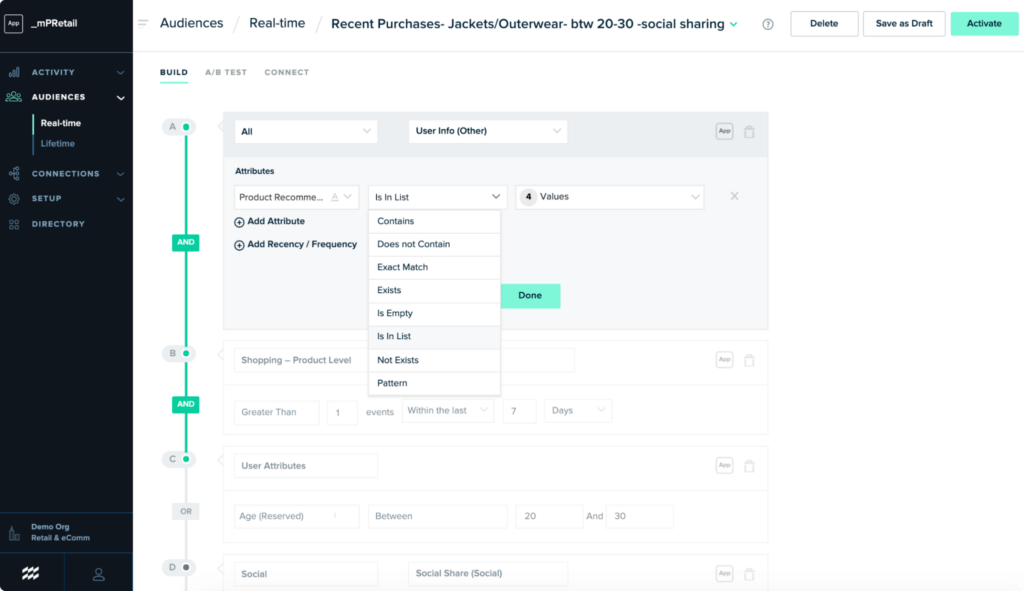
mParticle is your ally in managing customer data collected from mobile apps, websites, connected devices, and more. Like other user behavior tracking platforms, you can integrate mParticle with a customer engagement solution and create effective event-triggered campaigns.
You can use mParticle to create holistic customer profiles that encompass user behavior, preferences, purchase history, and interactions across various touchpoints. Based on these comprehensive profiles, you can deliver highly personalized experiences to your app users. For instance, as an e-commerce app, you can deliver tailored product recommendations and promotions through email, push notifications, and in-app messaging.
Businesses can use mParticle to trigger real-time events and actions based on customer interactions. Most importantly, the platform allows you to respond to such data through integrations with popular marketing tools like email marketing platforms, advertising networks, and customer relationship management (CRM) systems.
mParticle also has features to create granular audience segments based on specific criteria, such as demographics, behavior, or engagement level, and use them for precise targeting in marketing campaigns. Additionally, it facilitates data analytics by allowing data to be exported to analytics platforms, data warehouses, or business intelligence tools to conduct in-depth analysis.
App Monetization & Subscription Management
7. Apphud
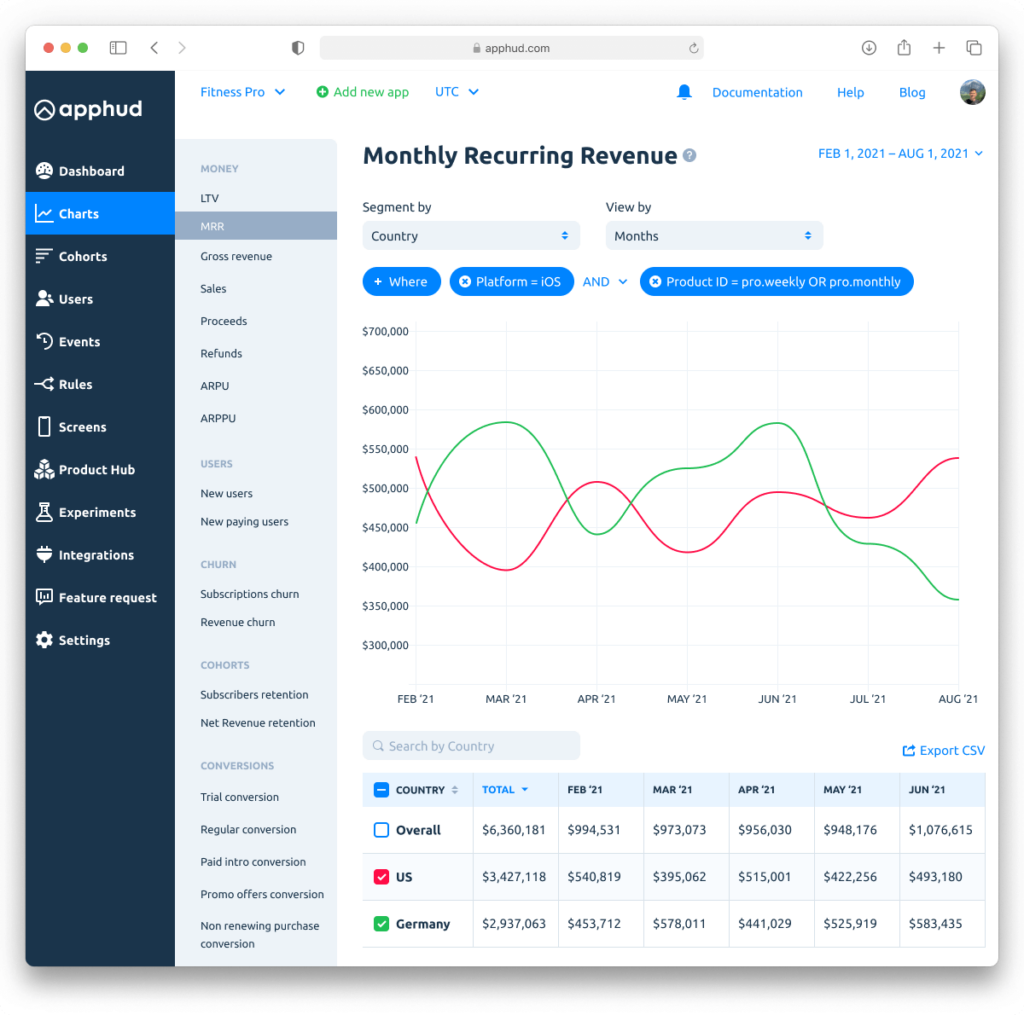
Apphud is a revenue data suite that supports app developers in managing and optimizing subscription-based apps. If your goals for 2024 involve boosting subscription revenue or retaining more users, consider adding this platform to your mobile app growth toolkit.
Firstly, it provides app developers with powerful subscription analytics tools to gain deep insights into their subscription-based apps. For example, a mobile app business can use Apphud to track key metrics, such as subscriber growth, churn rate, and customer lifetime value.
Moreover, you can run A/B tests and experiments related to subscription pricing and features. Imagine a news app that offers both monthly and annual subscription options. Using Apphud’s A/B testing capabilities, the app can experiment with different pricing tiers, trial periods, or content access to determine which combinations drive higher subscription conversions and retention.
Apphud can also equip you with the tools needed to engage your app subscribers effectively. For instance, a fitness app can use Apphud to segment subscribers based on activity levels, subscription plans, or usage patterns. These segments can be used to send targeted and personalized in-app messages or push notifications.
Moreover, it enables app owners to set up automated responses based on subscriber actions, such as sending a personalized thank-you message to users who have just upgraded to a premium subscription. These interactions help enhance the overall subscriber experience and build stronger relationships with users.
8. Adapty
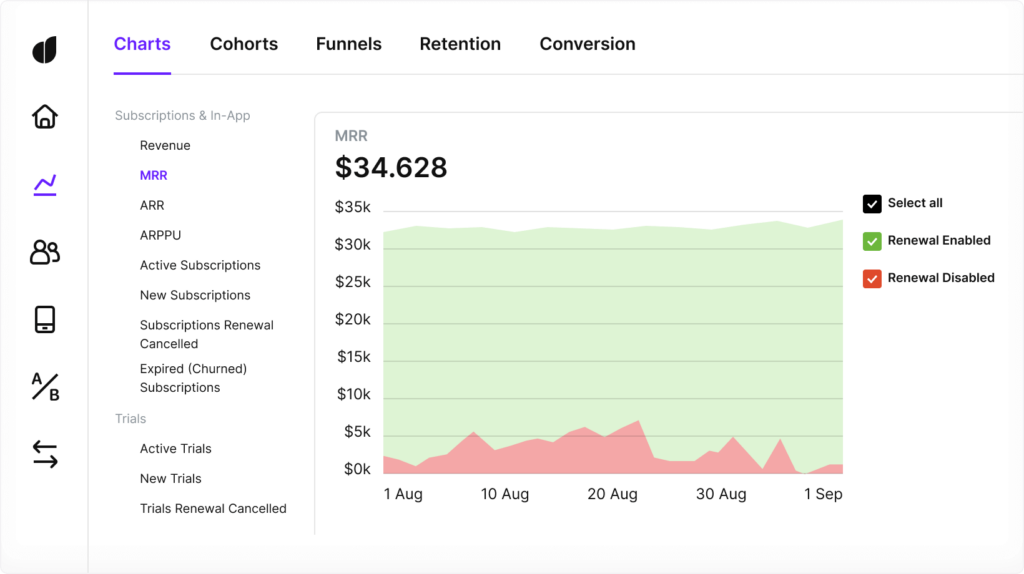
Adapty, with its robust set of features for mobile app subscription management and monetization, is a strong ally in driving the monetary metrics of a subscription-based app. It helps app developers optimize their subscription pricing strategies in multiple ways.
For example, Adapty’s A/B testing and analytics tools allow the app owner to experiment with different price points, trial durations, and promotional offers. By analyzing user behavior and conversion rates, the app can determine the optimal pricing structure that maximizes revenue and customer retention.
Adapty users can segment their audiences based on various criteria, such as subscription plan, engagement level, or location. This segmentation allows for highly targeted messaging and communication. For instance, a language-learning app can create a segment in Adapty including subscribers who haven’t practiced for a while and target these users with a personalized push notification encouraging them to continue learning.
To increase your mobile app growth rate, you may initiate an upselling or cross-selling strategy, and Adapty will help you implement it. Finally, Adapty’s real-time analytics provide insights into the effectiveness of these offers, allowing the app to fine-tune its monetization strategies and drive higher conversion rates.
9. RevenueCat
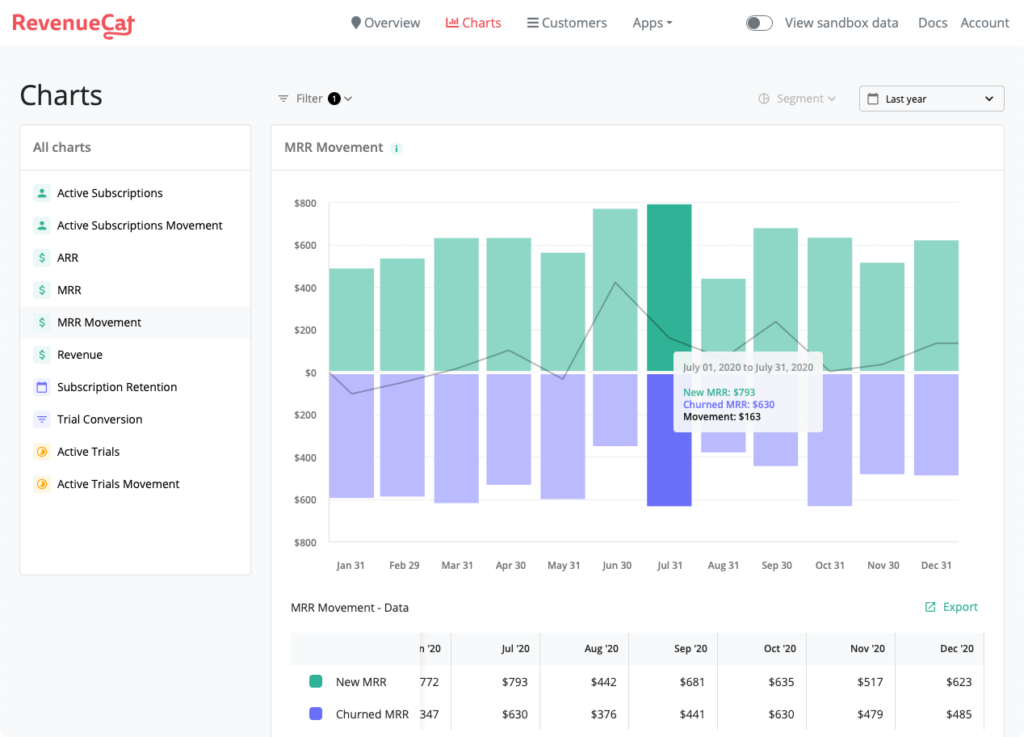
RevenueCat’s mobile app subscription management and monetization capabilities work for enhanced subscription revenue, improved subscriber retention, and a consistent subscription experience across various platforms.
Mobile app developers often struggle to determine the ideal pricing strategy for their subscription offerings. RevenueCat allows conducting pricing experiments easily. For example, a fitness app can use RevenueCat to test different subscription price points, trial durations, and promotional offers.
RevenueCat provides detailed subscriber insights and analytics. App owners can track user engagement, churn rates, and subscription renewal patterns. If, for example, a news app observes a high churn rate among subscribers who only consume content during the weekdays, it can use this data to implement a weekend-specific content strategy or targeted retention campaigns to improve subscriber retention.
Additionally, RevenueCat simplifies the management of apps available on multiple platforms (iOS, Android, web, etc.). A meditation app, for instance, can use RevenueCat to ensure that a smartphone user who subscribes on iOS has seamless access to premium content when they switch to an Android device or the web.
Overall, RevenueCat’s subscription infrastructure handles the complexities of cross-platform access, creating a seamless user experience and reducing churn.
Product & Behavior Analytics
10. Mixpanel

With Mixpanel, you can gain real-time insights into user behavior, conversions, and engagement across devices. Being integrated with a customer engagement platform, Mixpanel allows you to build sophisticated audience segments that you can use for exceptionally relevant and perfectly tailored communications.
Mixpanel empowers product teams to comprehensively analyze user behavior within their mobile apps or websites. For instance, an e-commerce company can use Mixpanel to track how users navigate through their online store, identify which products are frequently viewed but not purchased, and pinpoint drop-off points in the checkout process.
Mixpanel offers robust A/B testing and experimentation capabilities. Consider a social media platform looking to boost user engagement. They can create and test different variations of their news feed algorithm using Mixpanel’s A/B testing feature. By analyzing user interactions and comparing the performance of each variation, the platform can identify the most effective algorithm, leading to higher user engagement, longer session times, and increased user retention.
Mixpanel enables businesses to proactively address user churn by predicting which users are at risk of leaving their platform. For instance, a subscription-based video streaming service can use Mixpanel to analyze user engagement patterns and identify behaviors associated with cancellations. Armed with this information, the service can implement targeted retention strategies, such as offering personalized content recommendations or discounts, to reduce churn and retain valuable subscribers.
11. Amplitude
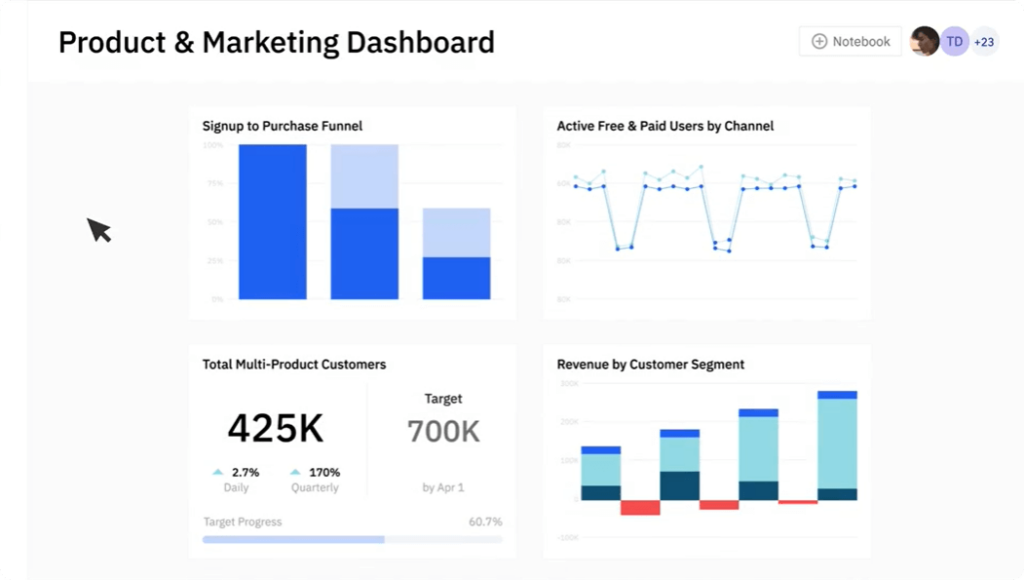
Amplitude provides product teams and marketers with actionable insights needed to enhance products, optimize conversion funnels, and drive mobile app growth. It provides detailed insights into how users interact with a mobile app or website.
For example, a mobile game app can use Amplitude to track user engagement with specific in-game features. By analyzing user behavior, they may discover that a certain game level or feature is less popular and leads to user drop-off. With these insights, the company can prioritize feature improvements, refine game mechanics, and ultimately enhance the user experience to boost retention rates and revenue. E-commerce businesses can leverage Amplitude to optimize their sales funnels.
Suppose an online retailer wants to improve its checkout process. Amplitude allows them to create a conversion funnel that tracks user actions, from product browsing to completing a purchase. By identifying where users abandon the funnel and analyzing their behaviors, the retailer can pinpoint pain points and implement changes, such as reducing form fields or optimizing the payment process.
Finally, its user segmentation features enable businesses to tailor their marketing efforts. Let’s say a subscription-based streaming service wants to improve user engagement and retention rates. They can use Amplitude to segment users based on their viewing preferences and behaviors and send personalized content recommendations and targeted email campaigns to specific user groups.
12. UXCam
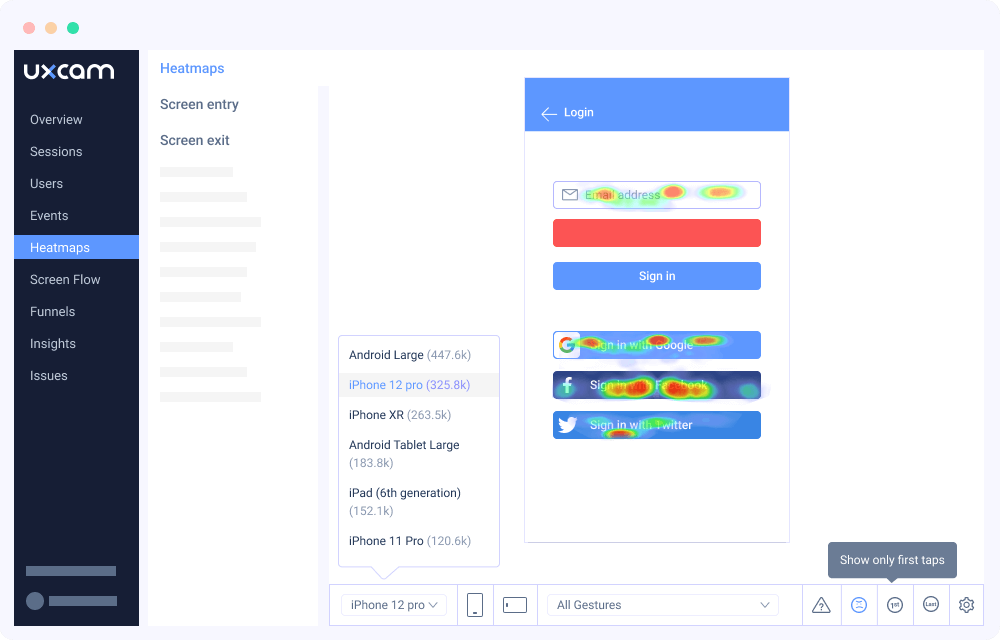
UXCam is a go-to tool for app businesses that need to understand user behavior, detect issues, and optimize their user experience. Backed with actionable insights through session replays, heatmaps, and analytics by UXCam, teams can create more user-friendly apps, reduce friction, and ultimately drive better user engagement and satisfaction.
UXCam enables businesses to gain deep insights into how users interact with their mobile apps. For instance, a retail app can use UXCam to analyze the user journey from app launch to making a purchase. They can then make data-driven design improvements to create a smoother, more intuitive shopping experience, increasing conversions and user satisfaction. UXCam is valuable for identifying and resolving errors or bugs within a mobile app.
Consider a financial services app that experiences occasional crashes during account transactions. UXCam’s session replay feature allows developers to review recordings of user sessions that encountered these crashes. By pinpointing the specific steps or interactions that trigger the errors, the development team can quickly diagnose the root causes and prioritize bug fixes.
Continuous user onboarding and new feature promos are two drivers of app adoption and growth. With UXCam, product teams can see how new users interact with onboarding tutorials and which features they use most frequently. By analyzing session recordings and user interactions, the development team can refine its onboarding process, provide clearer instructions, and guide users toward their first successful experience with the app.
Mobile Store Optimization
13. App Radar
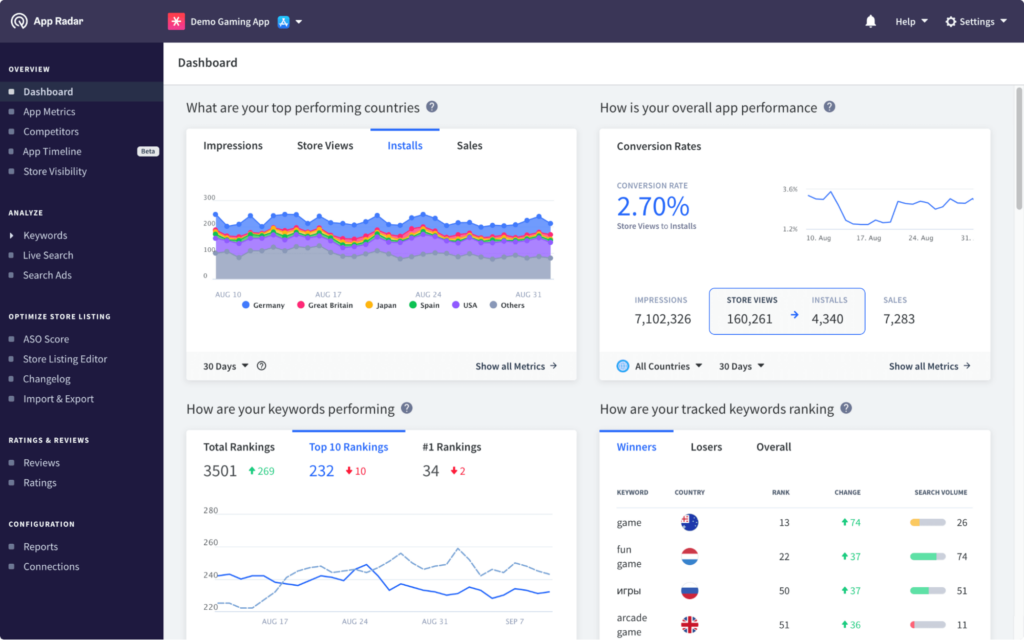
App Radar is a renowned tool for mobile app store optimization (ASO) and app marketing. App marketing teams find it useful for day-to-day operations and in pivotal moments, such as new market expansion.
App Radar is a go-to tool for conducting in-depth keyword research and discovering high-traffic, low-competition keywords to enhance their app’s visibility in app store search results. For example, a fitness app looking to improve its discoverability can use App Radar to find the best-performing keywords related to fitness and health. By optimizing their metadata, including the app title, description, and keyword field, they can increase their chances of ranking higher in app store searches.
App Radar provides valuable insights into competitors’ ASO strategies: their keyword rankings, app store performance, and real-time changes in their listings. Let’s say a travel booking app wants to outperform its competitors. With App Radar, they can analyze which keywords the competitors are targeting and how their rankings change over time, refine their own ASO strategy, and identify opportunities to outrank competitors.
Getting back to your own app performance, App Radar offers comprehensive monitoring and reporting tools. App downloads, user reviews, and keyword rankings across multiple app stores and countries are available in the tool. By comparing download trends, user feedback, and keyword rankings, the app can assess overall success and make data-driven decisions to improve user acquisition strategies in specific regions.
14. Appfigures
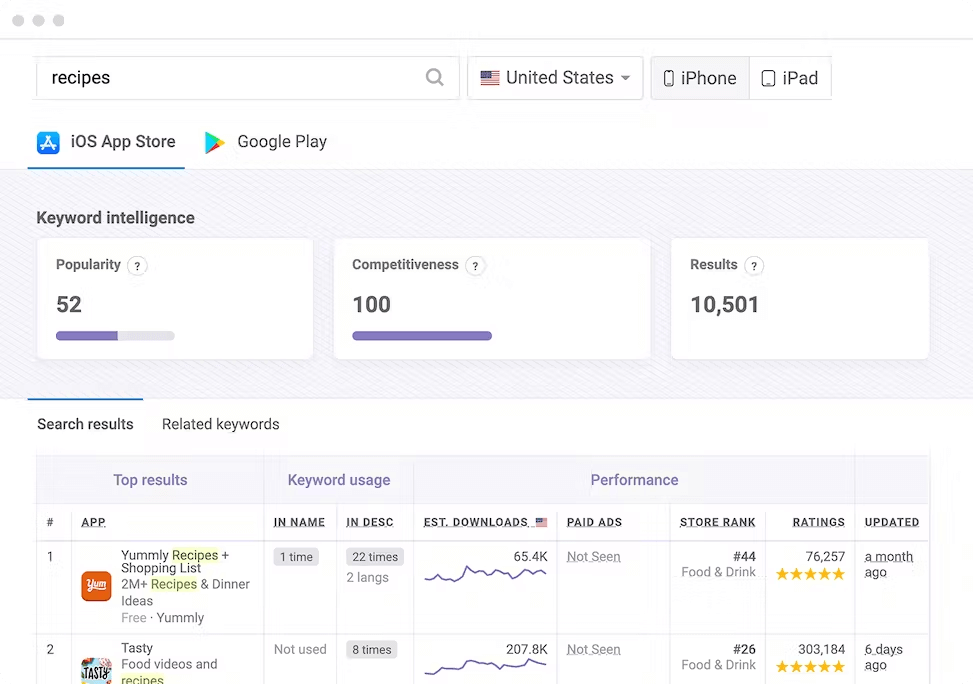
Appfigures is another strong player in the field of app store analytics and app performance optimization. It offers a robust suite of ASO tools needed to conduct keyword research and identify relevant and high-traffic keywords for your app’s category.
For example, a mobile game developer can use Appfigures to discover trending keywords related to gaming. By incorporating these keywords into their app’s title, description, and metadata, they can improve its visibility in search results. Appfigures also offers keyword tracking, allowing app owners to stay on top of their app’s discoverability and attract more users.
Competitor analysis is never enough, so Appfigure serves as an alternative provider of competitors’ performance metrics, app store rankings, and user reviews. Let’s say a productivity app wants to outperform its competitors. With Appfigures, they can monitor the download trends and user ratings of competing apps in the same category. By analyzing user feedback, identifying areas of improvement, and tracking the success of feature updates, the app can stay ahead of the competition.
Appfigures customers can track in-app purchases, subscriptions, and ad revenue, as well as gain insight into user demographics and acquisition sources. Seeking to optimize its monetization strategy, an e-commerce app may use Appfigures to analyze its revenue streams. The app can identify which user segments generate the highest revenue and tailor its marketing efforts and offers to maximize profits.
Mobile App Security
15. AppSamurai
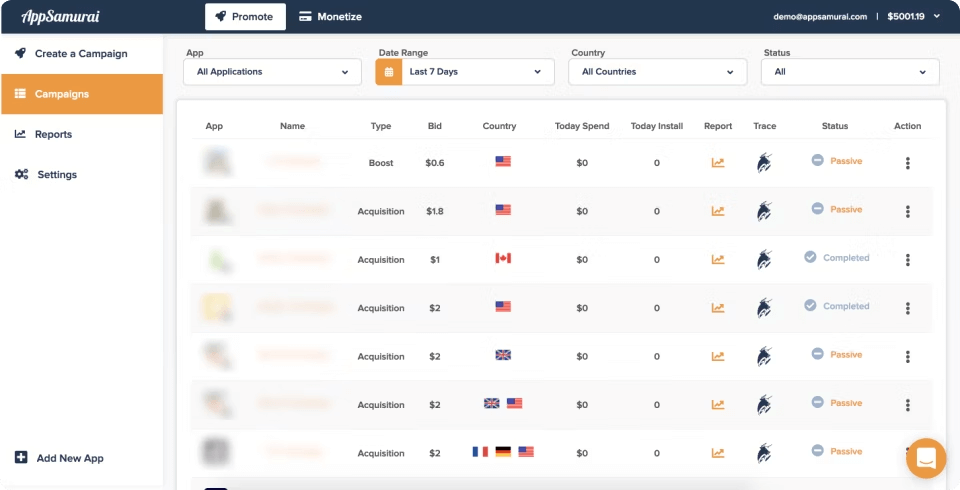
While user attribution analytics platforms like Adjust and AppsFlyer can arm you with anti-fraud tools, AppSamurai goes a mile further, serving as a mobile app security and marketing platform. It provides robust security solutions for mobile app developers and publishers.
One use case is protecting apps from various security threats, including data breaches and fraud. For example, a fintech app can use AppSamurai’s security features to implement multi-factor authentication (MFA) and encryption mechanisms to safeguard sensitive user data and financial transactions. AppSamurai’s threat detection and real-time monitoring tools can also identify and mitigate potential security vulnerabilities, ensuring the app’s integrity and protecting user trust.
AppSamurai offers ad fraud prevention tools to protect app marketing budgets from fraudulent activities such as ad click fraud. An e-commerce app can use AppSamurai’s fraud detection and prevention features to ensure that its advertising spend is allocated effectively and reaches genuine potential customers. By identifying and blocking fraudulent activities in real time, AppSamurai helps app marketers reduce wasted ad spend and improve their advertising campaigns’ return on investment (ROI).
Besides the security aspect, AppSamurai takes care of driving app downloads and engagement with the help of its marketing features. A gaming app, for instance, can utilize AppSamurai’s ad campaign management tools to target specific user segments based on demographics, interests, and behavior. The platform’s ad creative optimization and A/B testing capabilities can help developers refine their ad campaigns for maximum conversion rates.
16. Apptica
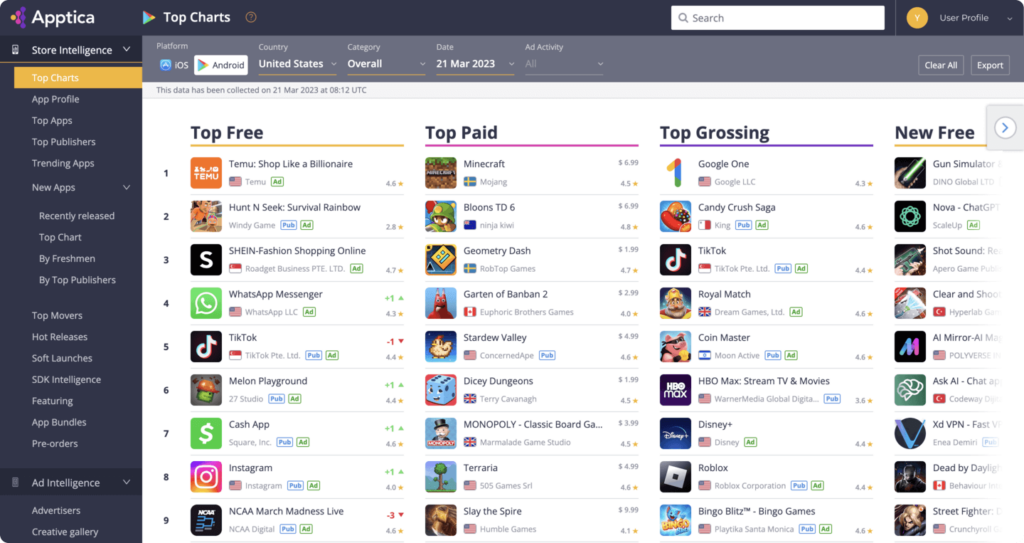
Apptica is an ad intelligence and app analytics tool. It provides insight into the mobile app market and transforms advertising research into a productive hunt. Apptica can provide valuable insights into your competitors’ mobile advertising strategies: their ad creatives, ad networks, and campaign performance.
For example, a mobile gaming company can use Apptica to study their rivals’ successful ad campaigns and gain inspiration for their own creatives. Also, they can discover which ad networks are most effective for acquiring users in their niche and save their budget.
As an Apptica user, you can explore a vast database of ad creatives across different app categories and countries. In the stream of real-world ad examples, you can identify trends, explore creative formats, and uncover a messaging strategy that can resonate with your target audience.
Apptica offers insights into the mobile advertising landscape, including ad spend trends, top advertisers, and popular ad formats. App businesses can leverage Apptica’s data to understand market dynamics, identify emerging trends, and allocate their advertising budgets strategically.
Reputation Management
17. AppFollow
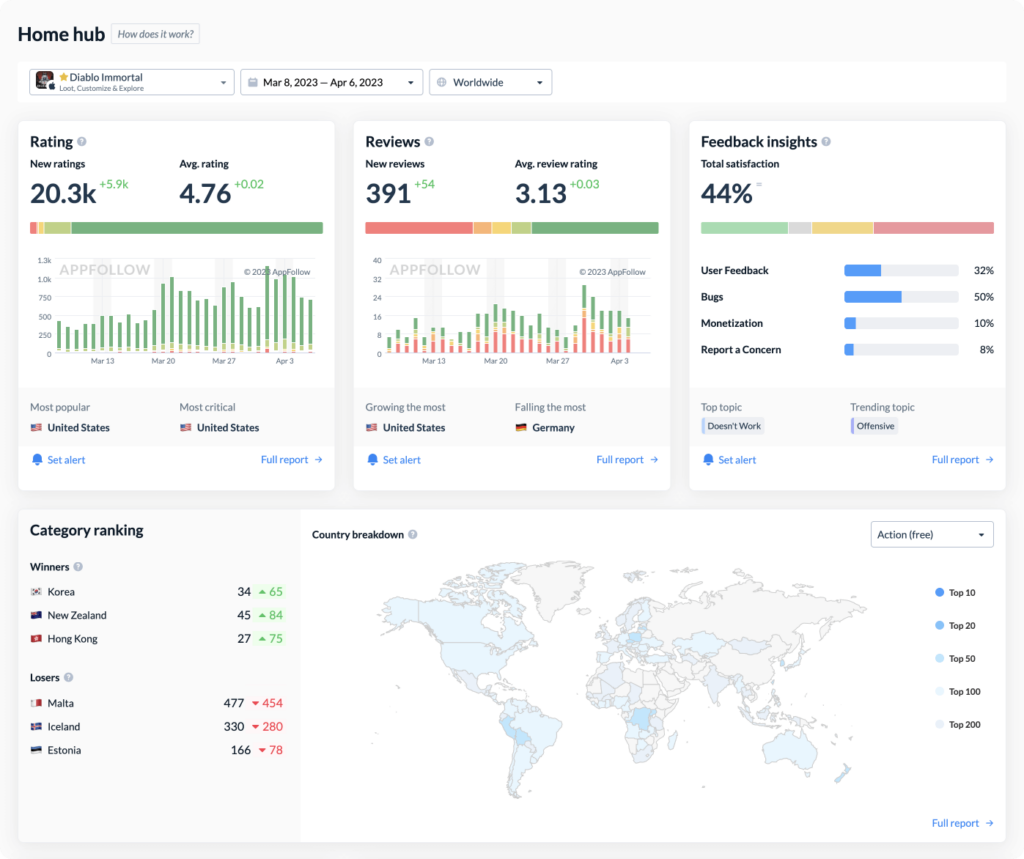
AppFollow helps to manage your app reputation, stay competitive, and drive mobile app growth through comprehensive review tracking and user feedback analysis. AppFollow gathers app store reviews and ratings from various platforms, including the Apple App Store, Google Play Store, and more, all in one unified dashboard.
AppFollow provides sentiment analysis, allowing users to categorize reviews as positive, negative, or neutral automatically. This helps businesses prioritize which reviews to respond to and address urgent concerns, ultimately improving their app reputation and user satisfaction.
This platform allows you to compare your performance with that of competitors by user reviews and app ratings. For example, a travel app can use AppFollow to identify common complaints or praises related to rival apps’ features and use this information to make data-driven decisions about their own app development. AppFollow’s competitor analysis tools help businesses understand market trends, customer preferences, and areas where they can differentiate themselves from competitors.
With AppFollow, you can conduct an in-depth analysis of user feedback and extract valuable first-hand insights. A productivity app can use AppFollow to perform sentiment analysis on reviews and comments. By identifying specific user pain points or feature requests, they can prioritize development efforts and enhance the app’s user experience.
Step Into 2024 With The Right Set of Mobile App Growth Tools
As you prepare for 2024, keep in mind that prioritizing your strategies and selecting the right tools is crucial for your success. The solutions listed above are considered leaders in their respective niches, so choosing them puts you in capable hands. May you achieve your upcoming objectives with these best-in-class tools.
Interested in building an email marketing strategy for your mobile app? Sign up for a free Moosend trial, craft converting campaigns in simple steps, and communicate consistently with your users.
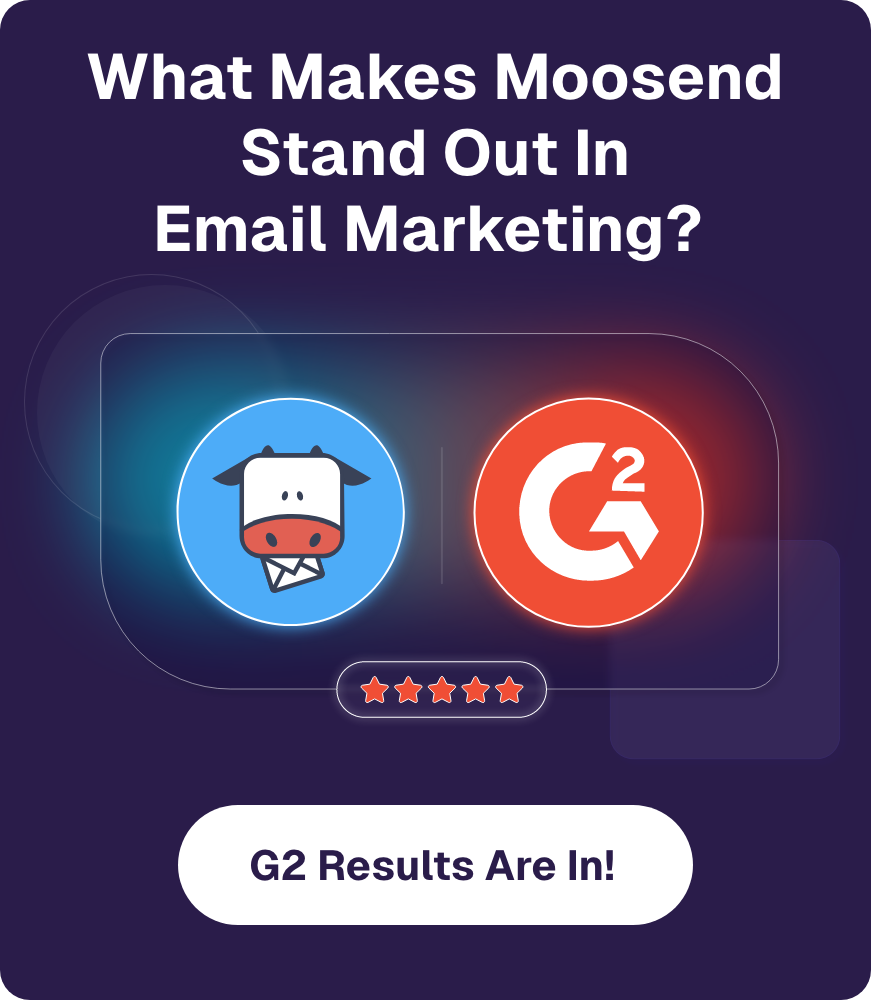
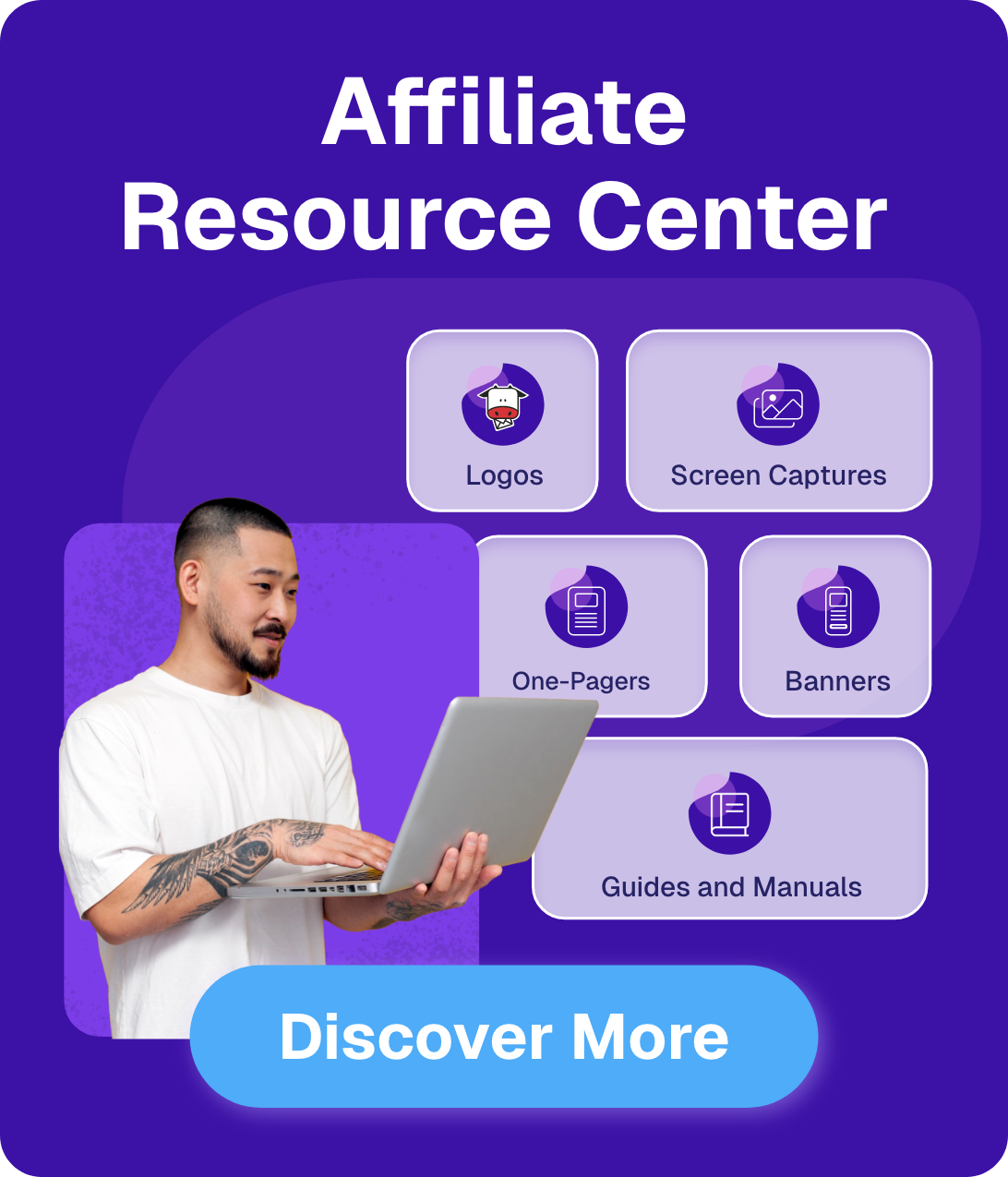

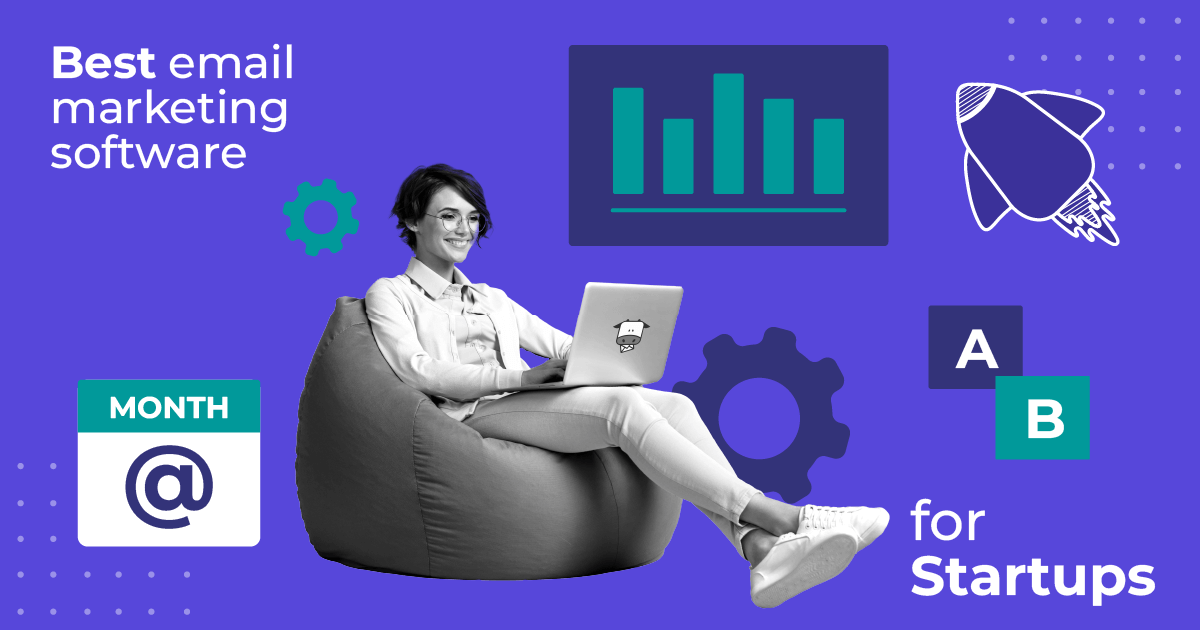
 Published by
Published by

 Published by
Published by
